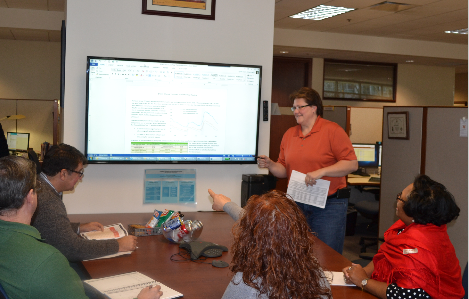I recently attended a BLS Data Users Conference in Atlanta, which included a lively panel discussion of how companies use BLS data in their everyday work. I was especially struck by the examples shared by Cathy Sparks, the Director of Corporate Workforce Strategy & Analytics for United Parcel Service. As a result, I asked Cathy to write a short blog post that I could share with all of you. My hope is to have more posts in the future highlighting how our data users put our data to work for them!
Cathy shares:
From Reporting to Problem Solving
I am certain that, in the 109-year history of United Parcel Service (UPS), this is the most exciting time to be in Human Resources and working with data.
In 2015, UPS processed nearly 70 million online tracking requests every day and operated more than 1,990 facilities employing roughly 444,000 people. Data is part of everything we do at the world’s largest transportation and logistics company. We tap into data to deliver lasting results. From an HR perspective, we are in the foundational stages of building a true analytics team. We want to use business intelligence to better understand our workforce and align those findings with broader strategic goals.
The recent BLS Data Users Conference in Atlanta was a great opportunity to highlight how we’re using analytics to create value and enhance our problem-solving skills.

Cathy Sparks and her team at UPS discussing data.
Our challenge is to transition from simple reporting to diagnosis. We are finding new opportunities to integrate our internal UPS data with BLS external data to analyze human capital trends, including predictive staffing models, safety correlations, and engagement risks. For example, using our data, we have created a model to evaluate state-by-state seasonal staffing needs. We incorporate BLS data to control for economic conditions, thus enriching the model. We hope to predict employee attrition risks and forecast a two-year, five-year, and seven-year staffing blueprint for our largest metropolitan areas.
The greatest data-driven opportunities are yet to come. UPS data, combined with BLS economic indicators, provide new insights and value throughout our global organization, improving service for our customers around the world.
 United States Department of Labor
United States Department of Labor